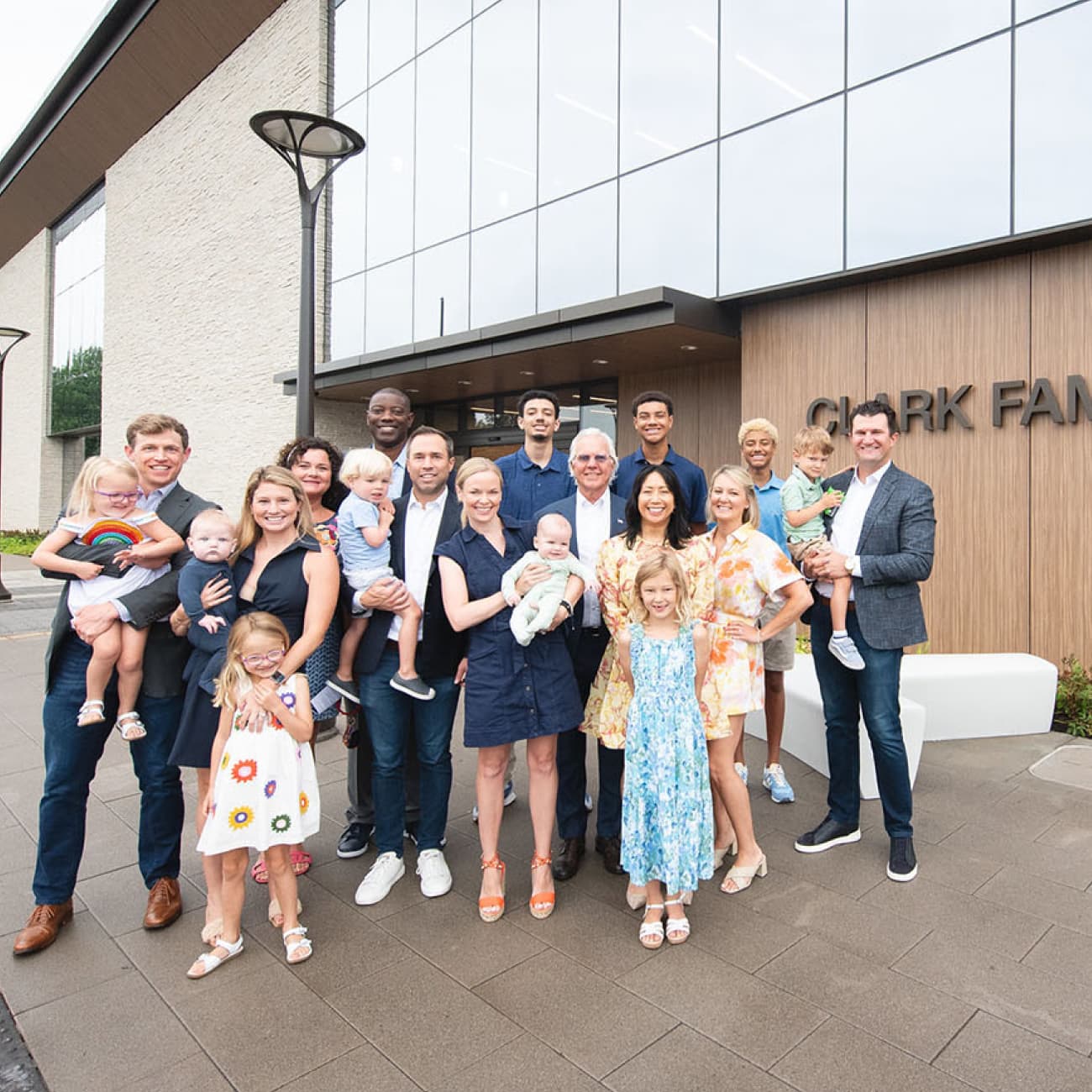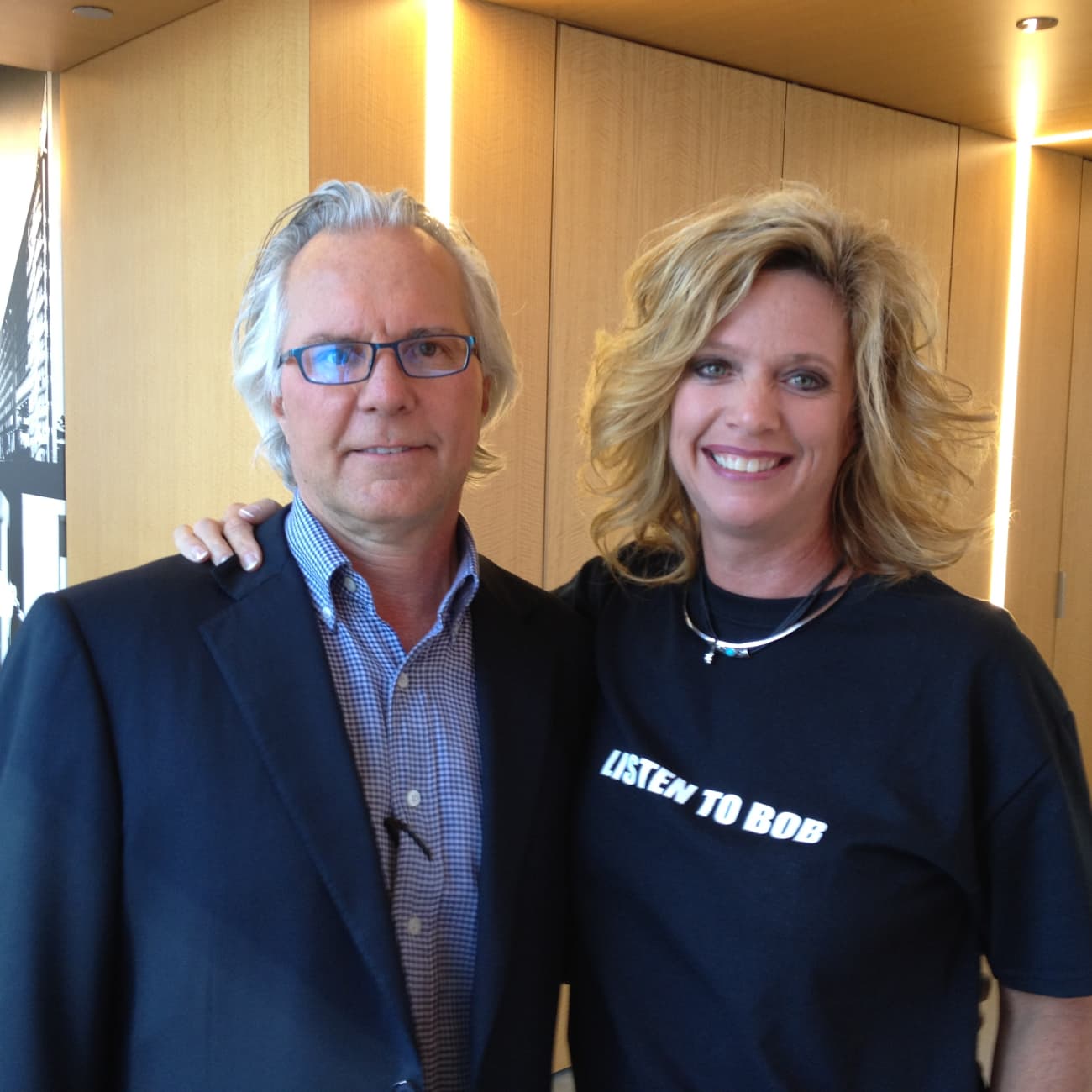Mentors Have Been My Secret Weapon!
Since I acquired a self-inflicted poor education, I was really going to need life teachers and business mentors. As a well-defined Attention Deficit member, in the fifth grade my mind was on the construction project next to my school instead of studying during my time in the Pattonville School District (Go Pirates) in Bridgeton, Missouri. Later, I went to Parkway Central High School in West St. Louis County, where I barely graduated after completing a co-op program in my senior year. There is a rumor that Noel Reuther and I painted our geography teacher’s house to get the final credit and receive a diploma. Once I became seriously ambitious about entrepreneurship and being in business, the first thing I had to admit was that I didn’t know a lot. I needed to actively seek help and find mentors.
Developing a mentor-mentee relationship is a two-way street with lots of give-and-take. I’d like to think my mentors also took away something from the experience too.
Family Mentors
My most important mentors were my mom and dad, for totally different reasons. What my mom showed me with her actions and attention, and my dad with his words and experiences, are the basis of what became my values, beliefs, non-beliefs, trust, broken trust, and dreams. These are where your visions come from and, ultimately, the desires that lead you to either community service, business, the military, college or technical school, or something terrible.
From ages 16 to 19, I worked closely with my father. I observed some of his painting company superintendents and operational VPs, and even some of their project managers. I learned impressive things from them. I was a great student of the actual actors of work and was ready to get my hands dirty or my clothes covered with paint to learn. I found that when superiors see an active learner, they want to be helpful in their teachings. My Uncle Bill Clark was my dad’s business partner; he graduated from West Point and later received an MBA from Stanford. He spent a ton of time with me in my twenties and influenced me on philosophy and left an indelible mark.
I’m on my Own
In my first serious business endeavor, an equipment company called MMECO, my partner Bob Luby and senior sales executive Richard Soppe had training from major equipment manufacturers like Ingersoll Rand and Caterpillar. They were madmen when it came to customer service. I’ve never met anyone, even to this day, who was better at closing deals than each of them. They were like a dog on a bone when it came to closing a deal. Then, if they got the slightest opportunity, they would deliver equipment as soon as it came off the line.
My True Ambition
After selling my interest to Bob Luby for his long-held goal of having a family business, I moved quickly to pursue my most ambitious dream, to be a designer/builder. (I always thought architecture and building were one thing.) This was a fairly new term then, but I knew it and felt that melding architecture and construction and working directly for clients could be a unique proposition. I was diligent in learning the pain points for clients who needed projects built. I found a bumpy process when it came to hiring architects who typically didn’t know what projects cost, and then hard-bidding the construction out, and eventually hiring the lowest bidder, and also using a bunch of other low bidders. This often led to adversarial relationships up and down the line. I found construction hard enough without all these other painful processes and believed I could really differentiate myself. I also learned that nobody was getting paid on time, and not many people understood what cash flow was. I knew what it was from the high school snowplowing business I started when I was 16. Cash flow is important.
The Plan Becomes Reality
What a tangled web I started with Clayco. Man, oh man, what I knew for sure was that I would need all the help I could get, and I was not shy about trying to figure out where I could find it. My dad was essential. His three rules were: hire the best and brightest, use the Golden Rule in all things, and gravitate to the best clients. Dad was also my biggest critic and would often insult me by asking what my next line of work would be. I also leaned on some of his friends and business associates, many of whom were instrumental to my success. Gabe Alberici (my first official meeting the day I started Clayco), Ray Pieper, President of Alberici, and Ed Calcaterra - EVP of Alberici, along with friend Tim Crowley, were some of the very first people I called on in 1984. Lorry Bannes from BSI Constructors in St. Louis was also an early teacher, especially in the world of concrete.

I started my own mentor pool quickly. Paul Macon, a young lawyer at Thompson Coburn, became one of my first actual business associates, along with Steve O’Neil, my early banker. Many of the major subcontractors in the market were easy to access and crucial to Clayco. I took great pains to try to meet anyone in the supply chain who would meet me five days a week for breakfast and five days a week for lunch, 52 weeks out of the year, whatever their schedule would allow. I would even try to meet them on Christmas Day if they would have me. I did this for two years and cannot emphasize enough how these people and meetings shaped my world.
Building these relationships with viable subcontractors was an unbelievably great learning experience. Even a young contractor, like I was, could get a meeting with a subcontractor, and I met with as many of them as I could. The ones that became very impactful to me were Chuck Oertli at Guarantee Electric, Cesar and Joe Vitale at Vee-Jay Cement, and Ray Dobbs at Kirkwood Excavation. Also, there was The Kolb Family, John Smith from John Smith Masonry, Phil Sams and Rick Kolaz from System Air, Ed Hill from Plumbing Planning, and David Payne from Payne Crest Electric.
Clients as Teachers
A few clients, like Don Lasater and John Ward from Mercantile Bank, along with Shelby Pruett at Sverdrup, an engineering firm, also became mentors. I was pleasantly surprised to learn that customers don’t mind when you tell them you don’t know what you’re doing and actually prefer it. Many of my clients were tremendously helpful in getting me through some of the lumps and bumps along the road. They also made introductions that fostered my career after they trusted me and knew I would outwork the competition to solve their problems. Clients saw it as advantageous, and it was a two-way street.
Not long afterward, I met Bob Boland at the RL Boland Architecture firm, now ACI Boland Architects. Bob is among the most positive, genuine, and talented people I have known. Some of my early and first important projects were with Bob. More importantly, knowing him led to introductions to Braswell, Perkinson, Levey, Eichner, and, if I recall, Ted Christner.
Bob Boland, the Connector
After Boland and I worked on banks together, he introduced me to David Braswell at Paragon Group and then to the founder, Lewis Levey. Some of my early work was with Paragon, and as Clayco became more newsworthy, I would receive cherished notes from Lewis. These were very encouraging at a time when I was having a tough go. For reasons not completely clear to me, Lewis had taken a liking to me and was very generous with his time and energy whenever I asked for advice or help.

Next, Bob made one of the most important introductions of my career to Dale Perkinson and his wife, Lorraine (LoLo), who would become my most influential mentors after my parents. I was 27 years old, and Dale was in his fifties. I was at the beginning of my career, and Dale and LoLo were sunsetting in the Caribbean and only came out of retirement to save their real estate empire in the financial crisis in the late 80s. We found each other irresistible to work with, learn from, and argue with, and we created a prolific amount of amazing works along with Boland. Dale was the first uniquely entrepreneurial, pioneering spirit that I ever really put all my trust in. Dale was an optimistic visionary and LoLo showed us all how to execute.
Dale founded Linclay Corporation and later the Perkinson Realty Group, both of which were incredibly visionary, prominent real estate development companies that left their mark all over the Midwest.

In the years after 1986, working in a symbiotic partnership, Dale, Lorraine, and I made many of those marks. Dale was a seasoned veteran real estate developer with incredible experience, and he and Lorraine were completely open books with me. Dale showed me how to do everything he did, and I was curious why he was doing that. He was very transparent and watching him work with clients and make commitments and then seeing his dogged determination to reach each goal was an inspiration in my early career. I learned in the early 90s that part of the reason he was teaching me everything was because he was planning on getting the hell out of there as soon as he had enough money in the bank. He basically turned over the scrappy real estate development business and the people he had finished his career with to me.

Bob Boland still wasn’t done with the helpful introductions. In 1986, Bob made another influential connection by introducing me to Kevin Eichner. Kevin became a critical strategy consultant and mentor to me, as well as a close friend. Kevin was the founder of a financial collaborative, which at the time was doing strategic planning to help Mark Twain Bank’s small businesses become more viable and bigger customers. It was a great concept, and I still don’t know why banks don’t offer a similar service to their customers today. Kevin developed Clayco’s first and second strategies in 1987 and 1988, and when you go back and read them today, it’s incredible that our collective vision has held up for almost 40 years.
Later, Kevin would also be my sponsor in YPO, which led to a world of 1,000 mentors. A few of my early YPO Forum participants are still close mentors and friends today; Hugh Scott, Grant Williams, Bill Miller, Chip Wiese, Kim Olson, Kevin Kohler, Shep Hermann, Craig LaBarge, Tom Hillman, Preston Fancher and Tony Sansone.
Meanwhile, the Company
Clayco was growing rapidly. We grew over 40% in nine of the first 16 years. In 1993 I had decided to go into the architecture business to truly integrate the process within the enterprise. Around 1995, we had eclipsed $300 million in revenue and had become industry-standard profitable. It was not yet good enough in my mind, but it was a good beginning.
I made it my business to meet and hopefully find projects to work on with the most accomplished architects in the St. Louis area. These were Ted Christner (Ted Christner Architects), Gene Mackey and Dan Mitchell (Mackey Mitchell Architects), Kent Turner and George Nikolajevich from Cannon Design, and Mark Hugeback (a spinoff of Boland, M&H Architects). Many of these became close associates and mentors as well. George Stock was also an essential partner on almost all my civil engineering projects.
A Quiet Force Behind the Scenes, Ted Christner

Among those early relationships, Ted Christner left a particularly strong impression. He ran one of the top architecture firms in the region, but you’d never hear that from him. He was quiet, thoughtful, and focused on the work, not the spotlight.
He had a way of making people around him better. Whether you were a client, a young architect, or just someone trying to figure things out, Ted treated you like your ideas had value. He listened more than he talked, and when he gave advice, it always landed.
What stuck with me most was how he approached problems. Ted reminded me more than once that architecture isn’t about style. It’s about solving problems. That simple idea changed how I thought about projects, and honestly, how I approached business.
I didn’t work directly with Ted every day, but the time I spent with him left a mark. He carried himself with integrity, kept his ego out of the room, and made you want to do better. I’m grateful for that.
Clayco Soars
By 1996, Clayco had blasted off like a rocket ship and needed a rudder. My young partners and I formed an advisory board. I had a couple internal people from the company who were officers, but then I added Ray Pieper, who had retired as president of Alberici Construction, join the board along with Lewis Levey and Ted Christner. Ted, in his usual honest way, once told me he wasn’t sure I should be in the architecture business. That kind of frank advice was part of what made him so valuable to have on the board. Around the time we started our board I hired Chris Cedergreen who was a seasoned veteran design architect who had worked alongside Bruce Graham at SOM and Gyo Obata at HOK and was leading the global practice of HOK when I recruited him to join me. I also gained an important mentor in Chris.
In 1999. something remarkable happened. Turner, the largest construction company in the United States, was sold to German building company Hochtief, and the company’s president resigned in protest. An absolutely iconic figure, Hal Parmelee had been at Turner Construction for over 40 years.
In the USA’s construction industry, if you didn’t know who Hal Parmelee was, you didn’t know anything. Shortly after he left Turner, I received a call out of the blue from Mr. Parmelee. “Bob,” he said, “it’s Hal Parmelee, formerly from Turner.” To my astonishment, he started to explain who he was. I cut him off and said, “Mr. Parmelee, I’m well aware of who you are.” In short order, we decided to meet, and he even introduced me to his son, Harold, who joined the company shortly after that to begin his career with me. At the same time, Hal joined my board of advisors as chairman, which I see as one of the most pivotal moments ever for Clayco.

Sitting around a room with Ray, Lewis, Ted, and Hal, along with my early partners Dave Moses, Michael Murphy, and Steve Sieckhaus, was reason to pinch myself. I couldn’t believe our good fortune to have this group of people in the room, advising me, critiquing our model, and helping us develop a strategic plan for a sustainable business like no other in the industry. They were a powerhouse. Hal Parmelee was really the architect of the way the enterprise is built today, with our business units and product type as our profit centers, as opposed to our branch offices. Hal knew the branch office approach led to internal competitiveness and divisive behavior within building companies, and the offices were not trying to help each other; they were trying to steal people from each other!
My early board of advisors was tremendously helpful and instrumental, especially as we walked through a building block approach of adding market segment business types to the company in chunks and doing lift outs from some of our competitors as opposed to making acquisitions, which are expensive and hard to digest.
Additional key mentors along the way have included Saint Louis University President Father Laurence Biondi, partner and founder of US Equities Bob Wislow, founding HOK architect Gyo Obata, Bill Koman, and now current mentors include David Hutkin, Russ Burns, Lee Wielansky, Don Imholz, communication guru Marcela Manjarrez, longtime partner Larry Chapman, George Paz, and maybe one of the biggest influencers of all, Michael Neidorff, who grew Centene from a $1B to a $146B company during his years as CEO and gifted me a tremendous friendship and much of his time. All Clayco shareholders have been impactful as well.
And the most amazing thing that happens is when the children you raise and mentor become the most important mentors to you! That is what happened to me. Thinking back on these mentors reinforces my belief in luck and that when it comes your way, people need to lean fully into it. I’m thankful every day for these people who have been and continue to be critical to my continuous learning.

The Mentors
Harold Clark, Judy Clark, Bill Clark, Bob Luby, Terry Schultz, Richard Soppe, Gabe Alberici, Ray Pieper, Ed Calcaterra, Lorre Bannes, Paul Macon, Steve O’Neil, Chuck Oertli, Cezar Vitale, Joe Vitale, Ray Dobbs, John Smith, Phil Sams, Rick Kolaz, Ed Hill, David Payne, Don Lasater, John Ward, Shelby Pruett, Bob Boland, David Braswell, Lewis Levey, Kevin Eichner, Ted Christner, Dale Perkinson, Lorraine Perkinson, Hugh Scott, Grant Williams, Bill Miller, Chip Wiese, Kim Olson, Kevin Kohler, Shep Hermann, Craig LaBarge, Tom Hillman, Pres Fancher, Tony Sansone, Gene Mackey, Dan Mitchell, Kent Turner, George Nikolajevich, Mark Hugeback, George Stock, Hal Parmelee, Dave Moses, Michael Murphy, Laurence Biondi, Bob Wislow, Gyo Obata, Bill Koman, David Hutkin, Russ Burns, Lee Wielansky, Don Imholz, Marcela Manjarrez, Larry Chapman, Michael Neidorff, Shawn Clark, Todd Weaver.






.avif)



